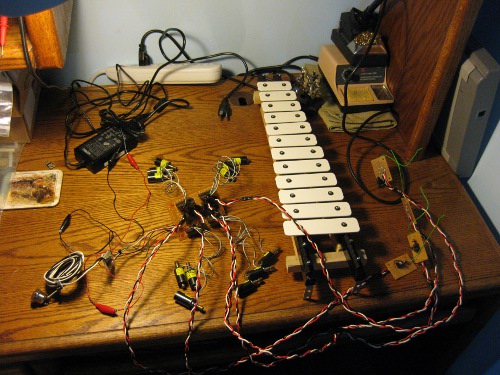Since the N800 came out there has been a lot of rumbling in the community about the unutilized hardware present in the device (and it’s sibling/successor, my beloved N810). The piece most complained about are the PowerVR MBX 3D accelerator and 5MB SRAM included on the OMAP2420 SoC the device is built around. The explanation has always been a mixture of licensing issues for the drivers, and that the external Epson S1D13745 display controller was better suited to the 800×480 (still unusually high for mobile devices) resolution, despite being rather slow and devoid of 3D-capability.
With the advent of the N900 and it’s non-backward-compatible Maemo 5 OS, there is some fear in the community that the N8×0 devices will be abandoned. The N900 looks like a very cool device, but like many tablet owners, part of the appeal of my N810 was that it wasn’t designed to have a >$50/month cellular data plan. Nokia’s offical (and seemingly very classy) stance is that they will provide support for continued community developed FOSS software for the platform, which currently mostly means Mer, a community firmware/ partial Maemo 5 backport. There are also several other linux-based OS ports to the N8×0 platform, and a burgeoning effort to produce a binary-compatibility-maintaining system software update like the ones Nokia used to produce for Maemo 4 which will hopefully all cross-pollinate sources and keep the platform alive. One only has to look at how long the OpenZaurus (later merged into OpenEmbedded/Ångström) community held on, and how much they accomplished to be hopeful.
The combination of these thoughts? Nokia (and the various other relevant IP owners) announced they will be supplying drivers for the PowerVR to the community in the immediate future. With a little luck the Mer hackers will get them integrated into a release soon, which may contribute to tipping to Mer as the predominant OS for n8×0 devices over the OS2008/Maemo 4 stack Nokia provided.
I depend so much on my n810 I haven’t really been into OS hacking on it, but as it ages and the community firmwares come to the fore I suspect I’ll get more into it (if I have time). Maybe as they get cheap I’ll even end up with one of the “knockoffs” to use as a test platform in the same primary machine/beaterbox setup as my bigger machines.




